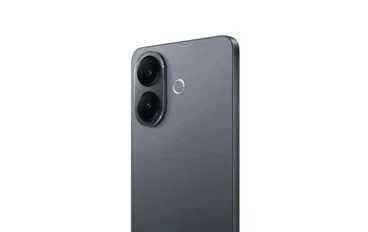
What is the Most Popular Phone in the United States?
In the competitive landscape of smartphones, identifying the most popular phone in the United States involves a detailed examination of market trends, consumer preferences, and technological advancements. This in-depth analysis will explore the leading contenders in the U.S. smartphone market, highlighting their features, market impact, and the reasons behind their popularity.

Current Market Overview of Popular Phones in the U.S.
The U.S. smartphone market is characterized by a high degree of competition among major brands, each offering a variety of models designed to appeal to different segments of consumers. Understanding the most popular phone in this market requires an examination of various factors such as brand reputation, technological innovation, and consumer satisfaction.
1. Apple's iPhone: The Undisputed Leader
Apple's iPhone consistently emerges as the most popular phone in the United States. The iPhone's dominance can be attributed to several key factors:
Unmatched Brand Loyalty and Ecosystem
Brand Reputation: Apple’s brand is synonymous with premium quality and cutting-edge technology. This strong brand identity fosters a high level of consumer loyalty.
Ecosystem Integration: The seamless integration between iPhones, iPads, Macs, and other Apple products creates a cohesive user experience. Features like iCloud and Handoff enhance the convenience of using multiple Apple devices.
Technological Innovation
Advanced Camera Systems: iPhones are renowned for their high-quality camera systems, including features like Night Mode, Deep Fusion, and 4K video recording.
Performance and Reliability: The latest iPhone models are equipped with A-series chips that offer exceptional performance, making them suitable for demanding applications and multitasking.
Security and Privacy: Apple places a strong emphasis on user privacy with features like Face ID and encrypted iMessages, contributing to its appeal among security-conscious users.
2. Samsung Galaxy: A Strong Contender
Samsung Galaxy smartphones represent another major player in the U.S. market. The Galaxy series is known for its innovative technology and varied model offerings, catering to a broad spectrum of consumers.
Diverse Model Range
Flagship Models: The Galaxy S series and Galaxy Z series are known for their state-of-the-art technology, including AMOLED displays, high-resolution cameras, and 5G connectivity.
Budget and Mid-Range Options: Samsung offers a variety of models in the Galaxy A series, providing affordable options with competitive features, such as large batteries and decent camera capabilities.
Technological Advancements
Display Technology: Samsung’s Super AMOLED and Dynamic AMOLED displays are highly praised for their vibrant colors and deep blacks.
Innovation in Foldables: The Galaxy Z Fold and Galaxy Z Flip series showcase Samsung’s leadership in foldable smartphone technology, offering unique form factors and multitasking capabilities.
3. Google Pixel: A Rising Star
Google Pixel phones are increasingly popular in the U.S. due to their integration with Google’s ecosystem and emphasis on camera technology.
Key Features
Stock Android Experience: Pixel phones offer a pure Android experience, free from third-party modifications, ensuring timely updates and a smooth user interface.
Exceptional Camera Performance: Pixel devices are known for their computational photography capabilities, including features like Night Sight and Portrait Mode, which enhance photo quality in various conditions.
Integration with Google Services
Google Assistant: Pixel phones come with Google Assistant built-in, providing users with a powerful AI tool for voice commands, smart home integration, and more.
Exclusive Features: Pixel models often include exclusive features like Call Screen and Personal Safety apps, enhancing the overall user experience.
4. Other Noteworthy Competitors
While Apple, Samsung, and Google lead the market, other brands also make significant contributions with their unique offerings. Brands such as OnePlus, Xiaomi, and Motorola provide alternative choices for consumers.
OnePlus
Performance and Value: OnePlus phones are known for their high performance and competitive pricing. The brand focuses on offering flagship-level specs at a more affordable price point.
User Experience: OnePlus devices feature OxygenOS, a clean and customizable version of Android that enhances user experience with features like fast charging and smooth performance.
Xiaomi
Affordable Innovation: Xiaomi offers feature-rich smartphones at competitive prices. The brand’s models often include high-resolution displays, large battery capacities, and advanced camera systems.
MiUI: Xiaomi’s custom interface, MIUI, provides a range of customization options and features to enhance the user experience.
Motorola
Reliability and Durability: Motorola phones are recognized for their reliable performance and durable build quality. The brand offers stock Android experiences and affordable pricing.
Moto Mods: Motorola’s Moto Mods allow users to add various accessories to their devices, such as projectors and external speakers, expanding their functionality.
Consumer Preferences and Market Dynamics
Consumer preferences play a crucial role in determining the popularity of smartphones. Factors such as pricing, features, and brand reputation influence buying decisions.
Impact of Pricing and Promotions
Price Sensitivity: Pricing remains a significant factor in consumer choice. Affordable models attract budget-conscious buyers, while premium devices appeal to those seeking advanced features.
Promotional Offers: Carrier deals and limited-time promotions can sway consumer choices, making certain models more attractive due to discounts or special offers.
Role of Advertising and Reviews
Effective Advertising: Strong advertising campaigns highlight key features and benefits, capturing consumer interest and driving sales.
Reviews and Ratings: Positive reviews and high ratings from tech experts and users provide valuable insights and influence purchasing decisions, as consumers often rely on reviews to assess the performance and reliability of a phone.
Conclusion
The most popular phone in the United States reflects a dynamic interplay of brand loyalty, technological innovation, and consumer preferences. Currently, Apple’s iPhone stands out as the leading choice, thanks to its advanced features, ecosystem integration, and strong brand reputation. Samsung’s Galaxy series and Google Pixel phones also hold significant market share, each offering unique advantages in technology and user experience. Other brands like OnePlus, Xiaomi, and Motorola provide valuable alternatives, catering to various consumer needs.































